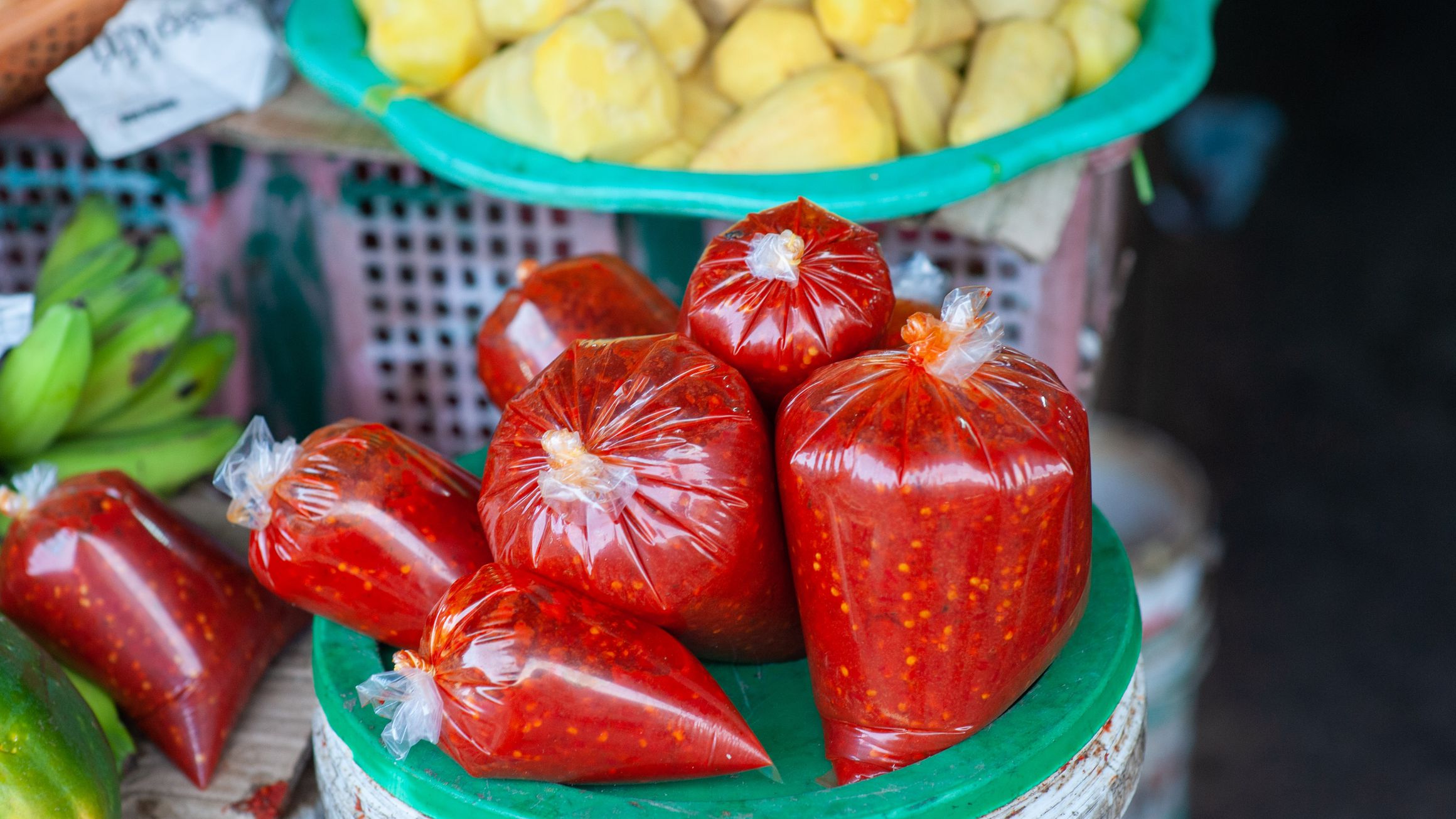
Ajar of Ớt Tương Triều Phát, the iconic chile sauce, lives on nearly every table in Vietnam, especially in the country’s south. This hot sauce is not all brute force. It’s a delicate sauce, one that simmers rather than boils, equipped with a slow-burning heat that rumbles to a fervent coda on the back of the tongue. Vietnamese food, with its cilantro, galangal, and mint, requires a sauce with backbone that won’t railroad less bullish flavors. In this regard, Ớt Tương Triều Phát is an exercise in precision, subtlety, and restraint.
My own relationship with the famed hot stuff began in 2016, when I landed in Hội An, where the banh mi sandwich came to prominence in the 1950s. Seated at a banquet table during an interactive food tour, I spied a bounty of cylindrical bottles adorned with lemon yellow labels, black caps, green print, and images of two red chile peppers, front and center. The bottles extended as far as my eye could see. My tour guide, Neville Dean — who started his company the Original Taste of Hội An with his wife, Colleen, roughly a decade ago — told us to open the sauce. An assault of umami, heat, and a surprising earthiness followed. Suspended in a vibrant red oil, the chunky sauce emerges as if from a molten pile of peppers. It required my attention, but didn’t burn my face off in the process. Give it a stir as a last-minute emulsifier and spoon it on. I ate it, first, on tooth-shatteringly crispy Vietnamese spring rolls. Sublime.
Unlike the Thai Sriracha, with which Americans are now more than familiar, Ớt Tương Triều Phát is neither smooth nor particularly acidic. It more closely resembles a jam than a sauce in consistency, and that texture is part of its appeal. Made by the same family for generations, Hội An chile sauce has a firm hold in Vietnam, particularly in Hội An. The sauce is the provenance of Tran Van Can, otherwise known as “Ms. Van.” She follows a 150-year-old recipe passed down through her Chinese expatriate family. “My grandmother used to make chutney and satay… to give to relatives to eat,” Ms. Van says. “Many people asked to buy it, and she started to sell from there. She made chutneys from fresh chile peppers, carefully cooked to form a spicy, aromatic spice, which makes everyone remember and taste it forever.”
:no_upscale()/cdn.vox-cdn.com/uploads/chorus_asset/file/19698883/Hoi_An_CAM6993__2_.jpg)
The inherited sauce involves elephant tusk chiles — Ms. Van refers to them as “ớt chìa vôi,” or “peppers with lime” — a large pot, and time; the process takes three days. Ms. Van watches her chiles vigilantly, stirring them into submission. “All chile sauce processing is done manually,” she says. “Is our chile [sauce] art? I think the raw material of the chile is also important.” In Southeast Asia, elephant tusk chiles are also known as elephant trunk, or cow horn, chiles, owing to their shape. Part of the capsicum annum species, these peppers originally hailed from India and Central and South America. After selecting her fresh chiles, Ms. Van removes the stalks and seeds, grinds the chiles, and stir-fries them. Batches are produced every two days and are all made entirely by hand.
“You wouldn’t eat them raw on their own,” says Siem Reap-based food and travel writer Lara Dunston of the peppers. “But cook them up and they’re medium-to-hot, depending on your tolerance. They’re a little sweet and fruity, but simmer them over a long period of time, as Ms. Van does, and the fruitiness and sweetness is more pronounced, as is the heat.” Read more

Informative article, just what I was looking for.
Comments are closed.